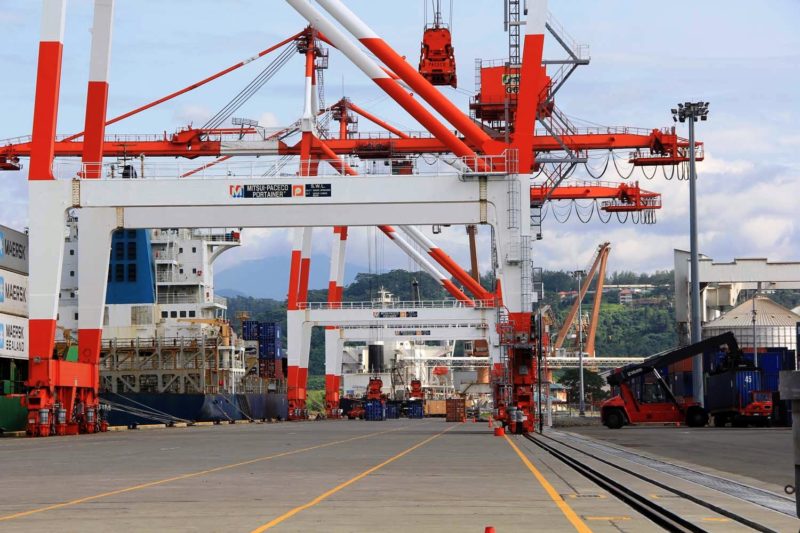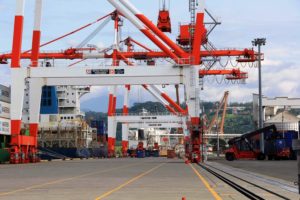

The Subic Bay Metropolitan Authority (SBMA) is waiving the accreditation fee for Subic port users for a limited period.
In an advisory, SBMA said it is waiving the US$200 accreditation fee for the first 80 new businesses entrants and first 20 accredited entities due for renewal of accreditation certificate for the period covering October 18 to December 31, 2017.
The waiver covers ship agents, freight forwarders, customs brokerage firms, and trucking services.
The move is designed to attract more volume and is part of the authority’s 25th anniversary celebrations in November after being created under Republic Act No. 7227 in 1992.
To avail, the applicant-proponent or entities with accreditation certificate will be entitled to free-of-charge application if they bring in “at least one container within one month from filing of application or renewal of accreditation certificate.”
Failure to meet the requirement will require the applicant-proponent to pay the accreditation fee. Requirements prescribed under SBMA’s Policy on Accreditation remain in effect.
The Freeport authority said the marketing initiative is designed “to showcase and broaden industry awareness of the use of Port of Subic Bay’s container terminal” and to increase container port traffic and utilization rate. It is also aimed at helping decongest the Port of Manila.
SBMA added that the move will accommodate small and medium enterprises in consonance with the 10-Point Agenda of SBMA chairperson and administrator Atty. Wilma Eisma, and is part of the agency’s contribution in the promotion of inclusive business.
SBMA head of Airport and Seaport Marketing Group and officer-in-charge, deputy administrator of Public Health & Safety Department Ronnie Yambao, had earlier announced the authority’s plan for a free-of-charge accreditation at the recent Northern Luzon Investors’ Conference organized by PortCalls and Asia Customs & Trade.
Roberto Locsin, president of Subic Bay International Terminal Corp. (SBITC), which operates Subic’s New Container Terminals 1 and 2, in an interview with PortCalls after the event, said “the incentive is based around encouraging more brokers to come, and I think that’s a great move on the part of SBMA.”
“We need a lot of brokers to service the small and medium enterprises that don’t necessarily use the big-brand brokers,” Locsin explained.
“We want to make sure that all the mom-and-pop guys can have an opportunity to use this port because while there are extra hurdles in the accreditation, they’ve made it now easier,” he added.
Eisma, in a presentation during the conference, noted that while the accreditation process for port users is already streamlined, they still want to improve the process.
She added that SBMA is also discussing with the Subic-Clark Alliance for Development (SCAD) Council, the single body that ensures the development of the SCAD Corridor as a world-class mega-logistics hub and a global gateway to the Asia Pacific Region, to further improve ease of doing business and lessen costs at Subic port.
READ: Traffic-, truck ban-free setup gaining Subic more shippers—SBMA chief
Currently, Subic port has a one-stop shop that houses the SBITC, SBMA, and Bureau of Customs-Subic offices to allow for faster processing of cargoes at the terminal.
Eisma said they also plan to open more one-stop centers for other businesses at the Freeport.
Subic port has been seeing improved volumes since 2014. For the first five months of the year, containerized cargoes increased 8% to 55,516 twenty-foot equivalent units (TEUs) from 51,346 TEUs in January-May 2016.
Non-containerized cargo volume, however, declined 5%, as only 2.96 million metric tons (MT) passed through the Port of Subic during the period, compared to 3.12 million MT in the same period last year.
Total port revenue reached P488.82 million, which is 11% higher than the P440.99 million recorded in the same period last year.
“Considering that there were less ship calls this year than last year—we had a total of 1,164 in January to May 2017 compared to P1,414 in 2016—then that was still a remarkable achievement for Subic,” Eisma said.
Subic port also registered a 23% increase in export value in the first five months of 2017, with total exports reaching US$1.06 billion, compared to just $865.26 million in the same period last year.
Similarly, Subic’s import value also rose by 9% in the same period, or from $628.65 million last year to this year’s $682.18 million.
Currently, the port is serviced by carriers Evergreen, American President Lines, Nippon Yusen Kabushiki Kaisha, Mitsui O.S.K. Lines, SITC Container Lines, Wan Hai Lines, MCC Transport, K Line, Samudera, Interasia Lines, and Maersk Line.
Other Subic callers are Bow Ship Management, Inc.; T. Madsen Shipping Philippines, Inc.; Soriamont Steamship Shipping; and Uni Ship Incorporated. – Roumina Pablo




